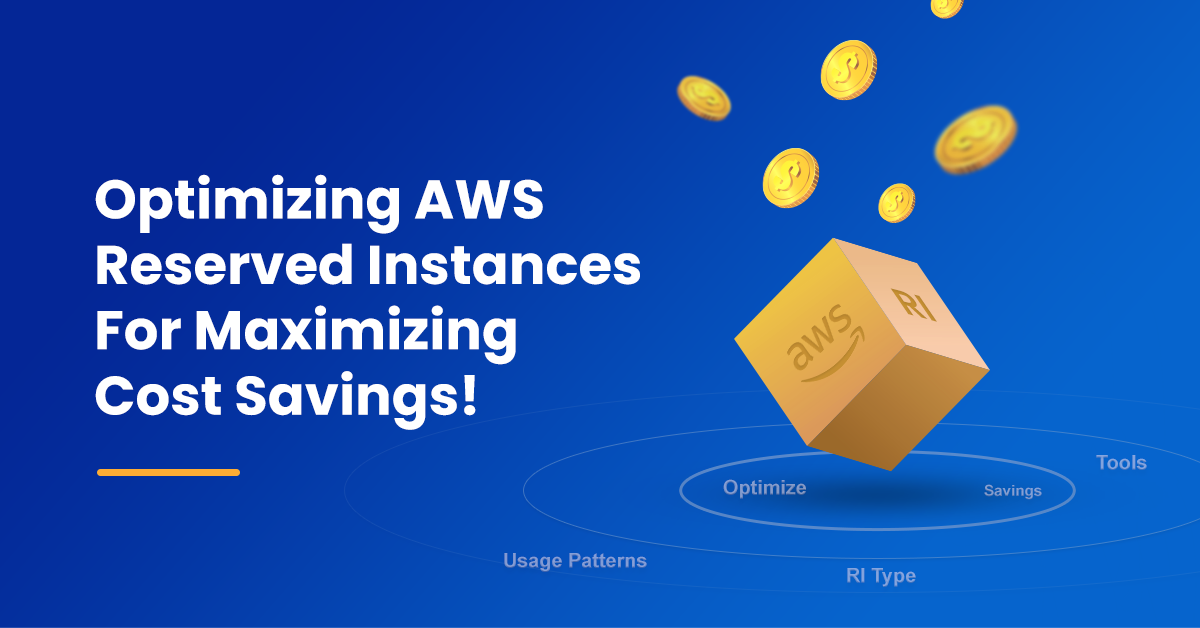One of the most effective ways to save money on AWS is by utilizing Reserved Instances (RIs), which allow you to commit to a specific instance configuration for a period of time in exchange for a significant discount on the hourly rate. While RIs can provide substantial savings, choosing the right type and quantity of RIs to purchase can be a complex process that requires careful consideration of your workload and usage patterns.
In this blog, from understanding AWS RIs to the best optimization practices, we will provide you with a comprehensive roadmap for getting the most out of your AWS investment. So let’s dive in and start optimizing your AWS Reserved Instances today!
What Are AWS Reserved Instances (RI)?
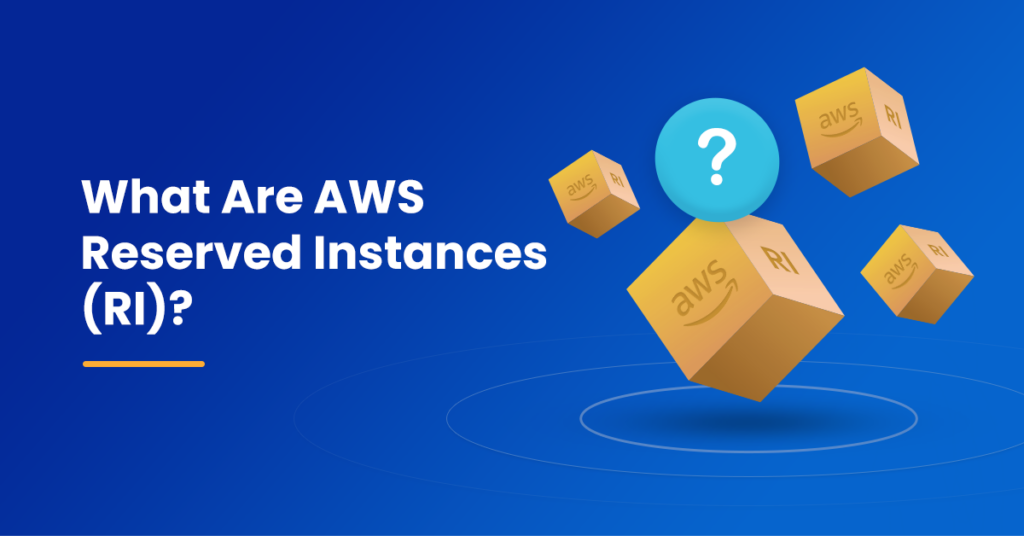
Amazon Web Services (AWS) Reserved Instances (RIs) are a purchasing option that allows users to commit to using a specific amount of computing capacity in the AWS cloud for a period of time in exchange for a significant discount on the hourly rate for that capacity. By reserving capacity in advance, users can potentially save up to 75% compared to the On-Demand price for the same resources.
AWS offers three types of RIs: Standard RIs, Convertible RIs, and Scheduled RIs.
- Standard RIs provide the most significant discount but require a long-term commitment to a specific instance type and operating system.
- Convertible RIs offer more flexibility by allowing users to exchange their reservations for different instance types or operating systems at a slightly higher cost.
- Scheduled RIs allow users to reserve capacity for specific time windows each day, week, or month.
RI discounts are applied automatically to any matching usage within an account, making them an attractive option for workloads with consistent usage patterns. However, it’s important to note that RIs are non-refundable and can be challenging to modify or exchange once purchased. Hence, it’s essential to carefully evaluate your usage patterns and make informed decisions before committing to a reservation.
What Is Reserved Instance Optimization?
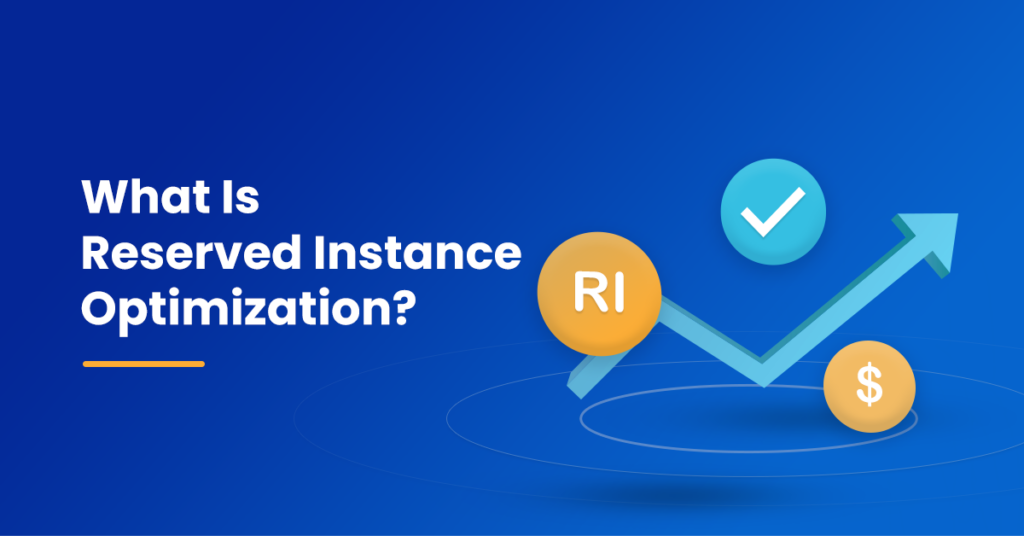
Reserved Instance (RI) optimization refers to maximizing the cost savings potential of AWS Reserved Instances. While RIs can provide substantial discounts on AWS resources, purchasing the wrong type or quantity of RIs can lead to overspending or unused capacity, negating potential savings.
By optimizing RI usage, businesses can reduce their AWS expenses and allocate resources more efficiently, allowing them to focus on core business objectives. AWS provides several tools, such as AWS Cost Explorer and AWS Trusted Advisor, to help users analyze and optimize their RI usage. Additionally, third-party tools like nOps are available to provide more advanced RI management capabilities.
Reserved Instance Optimization helps you to determine the most cost-effective way to purchase RIs and to match them to your changing computing needs. RIs are applied based on instance family, region, tenancy, and platform (OS).
Optimization aims to match compute resources with RIs, in which case you achieve full coverage of your compute resources with RIs and, simultaneously, full utilization of RIs. Achieving this typically involves taking a range of decisions involving repurchasing, converting, exchanging, and modifying RIs. As you may imagine, this can be a big challenge if your computing resources change highly dynamically.
Best Practices For Optimizing AWS Reserved Instances!
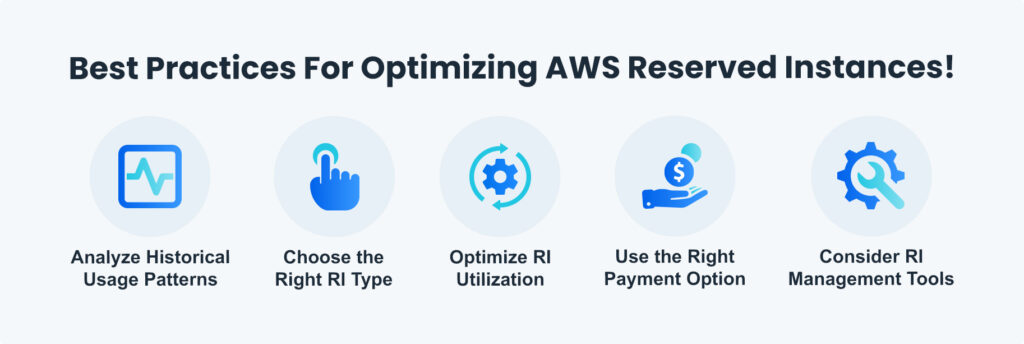
Optimizing AWS Reserved Instances (RIs) can be a complex process that requires careful evaluation of workload requirements, historical usage patterns, and available purchasing options. Here are some best practices for optimizing AWS RIs to help maximize cost savings:
- Analyze Historical Usage Patterns: Before purchasing RIs, analyze historical usage patterns to identify the optimal RI purchase options. This will help you determine your workload’s right type, term, and payment option.
- Choose the Right RI Type: AWS offers three types of RIs: Standard, Convertible, and Scheduled. Choose the correct type of RI that aligns with your workload requirements. For example, Standard RIs offer the most significant discount but require a long-term commitment to a specific instance type and operating system.
- Optimize RI Utilization: Ensure that reserved capacity matches actual usage by monitoring RI utilization. If utilization is lower than expected, consider modifying or exchanging RIs to avoid unnecessary costs.
- Use the Right Payment Option: AWS offers different payment options for RIs, including All Upfront, Partial Upfront, and No Upfront. Choose the right payment option based on your financial goals and usage patterns.
- Consider RI Management Tools: RI Commitment management tools like nOps are available to provide more advanced RI management capabilities. nOps provides detailed insights into RI utilization, allowing businesses to identify underutilized RIs and take corrective action to avoid unnecessary costs.
By following these best practices, businesses can optimize their AWS RI usage, reduce expenses, and allocate resources more efficiently, allowing them to focus on core business objectives.
How Can nOps Help With Reserve Instance Optimization?
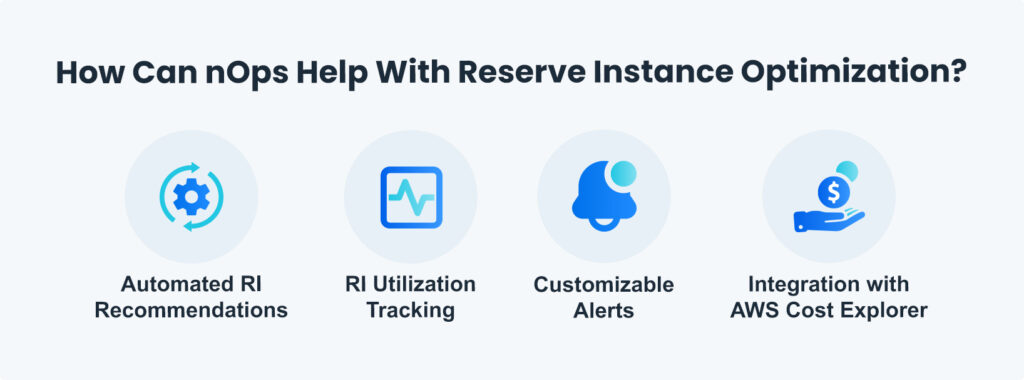
nOps is a cloud management platform that helps organizations optimize their AWS cloud infrastructure to improve efficiency, reduce costs, and ensure compliance. One of the critical features of nOps is its Reserved Instance (RI) commitment management tool, which helps businesses maximize cost savings by identifying the optimal RI purchase options and tracking RI utilization.
- Automated RI Recommendations: nOps automatically analyzes historical usage patterns and recommends the optimal RI purchase options based on workload requirements, helping businesses maximize cost savings.
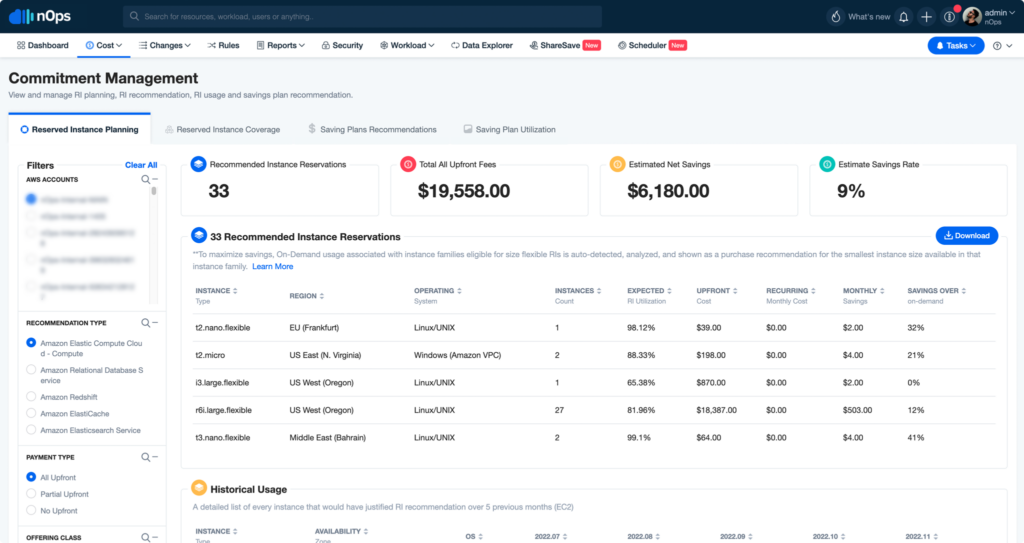
- RI Utilization Tracking: nOps provides detailed insights into RI utilization, allowing businesses to identify underutilized RIs and take corrective action to avoid unnecessary costs.
- Customizable Alerts: nOps allows users to set customizable alerts for RI utilization and capacity planning, ensuring that businesses can proactively manage RI usage and avoid overspending.
- Integration with AWS Cost Explorer: nOps integrates with AWS Cost Explorer to provide users with detailed cost analysis and reporting, enabling businesses to gain deeper insights into their AWS usage and optimize cost savings.
With nOps, businesses can optimize their AWS RI usage, reduce expenses, and allocate resources more efficiently, allowing them to focus on core business objectives.
Your team focuses on innovation, while nOps runs optimization on auto-pilot to help you track, analyze and optimize accordingly! As a result, our customers can benefit in two key ways:
- First, pay less for what you use without the financial risk.
- Second, use less by automatically pausing idle resources.
Let us help you save! Sign up for nOps today.

